Submitted Review
‘Zahalka’s work has pointed sense of irony to it.’
Anne Zahalka ‘Lost Landscapes’
When I was a kid in the 1980s, I remember the Queen Victoria Museum and Art Gallery having a dodo on display in its zoology section.
Ironically enough, it’s gone now.
To this day I can still picture most of those dioramas, with their taxidermy animals, even though they were mothballed in 2008 when the Royal Park building was renovated.
So there was a pleasant kind of nostalgia for me in visiting Anne Zahalka’s exhibition, Lost Landscapes, which unearths some of those erstwhile dioramas that were made in the 1970s, and puts them back on display in the same part of the building they once occupied, populated once more by those beautifully preserved bird specimens.
But side-by-side with each diorama is a giant photographic reproduction by Sydney photo/media artist Zahalka, digitally altered and enhanced to create a very different, modernised and more confronting narrative of her own.
Lost Landscapes is part of a much broader ongoing series called Wild Life, in which Zahalka does the same thing to old dioramas from other museums around the country, subverting their fixed narratives to reflect modern environmental issues.
The entry to the exhibition features the restored Macquarie Island diorama, with penguins and gulls on the rocky shore of a sweeping, pristine bay. But Zahalka’s reimagined version nearby shows Macquarie island as it is now, a base of human scientific operations, largely in the name of conservation.
In the background are the brightly coloured, egg-like structures that serve as shelter for humans, with another being flown in by helicopter. And the beaches beyond are littered with rubbish and teaming with huddled, penguin-like groups of scientists, giving the piece its title, “A colony of boffins.”
It feels like the scientists are the ones being observed by the birds.
A Fingal Valley scene, originally showing a very benign and static scene featuring magpies, a rosella and a miner, is turned into a work of high drama in Zahalka’s hands.
Her version is a valley on fire, a victim of land-clearing and climate change, as a black kite spreads embers around the dry grass. Zahalka’s image is a flurry of chaos and frantic flying birds, with sheep bones littering the ground, a reminder of the impact of farming.
Her reworking of a familiar Tamar Island scene is something a little more tongue-in-cheek but still poignant. The original diorama showed a pair of swamp hens with pristine wetlands behind them.
Not only does Zahalka’s version include the now-present boardwalk, but the foreground is now occupied by a pair of mating swamp hens being watched almost voyeuristically by a group of bird-watchers in camouflaged hides with long-lensed cameras, trying to snap images of nature in this place that was developed specifically to let humans get easier access to it.
The dioramas and their taxidermy, created by QVMAG former chief preparator Terry Cashion in the 1970s, are beautiful works of art in their own right. The hand-painted concave backdrops are detailed and evocative, creating a surprising sense of depth and perspective. Indeed, the exhibition includes a tribute to Cashion, fittingly presented on the rear of one diorama, visible through a hole in the wall.
Zahalka’s work has pointed sense of irony to it. While poking fun to a certain extent, her images contain a much more serious indictment on our actions, including the ways we do harm to the environment at the same time as we think we are doing the opposite.
The idealised landscapes depicted in many of those old dioramas as now as lost as those dusty artificial representations of them are.
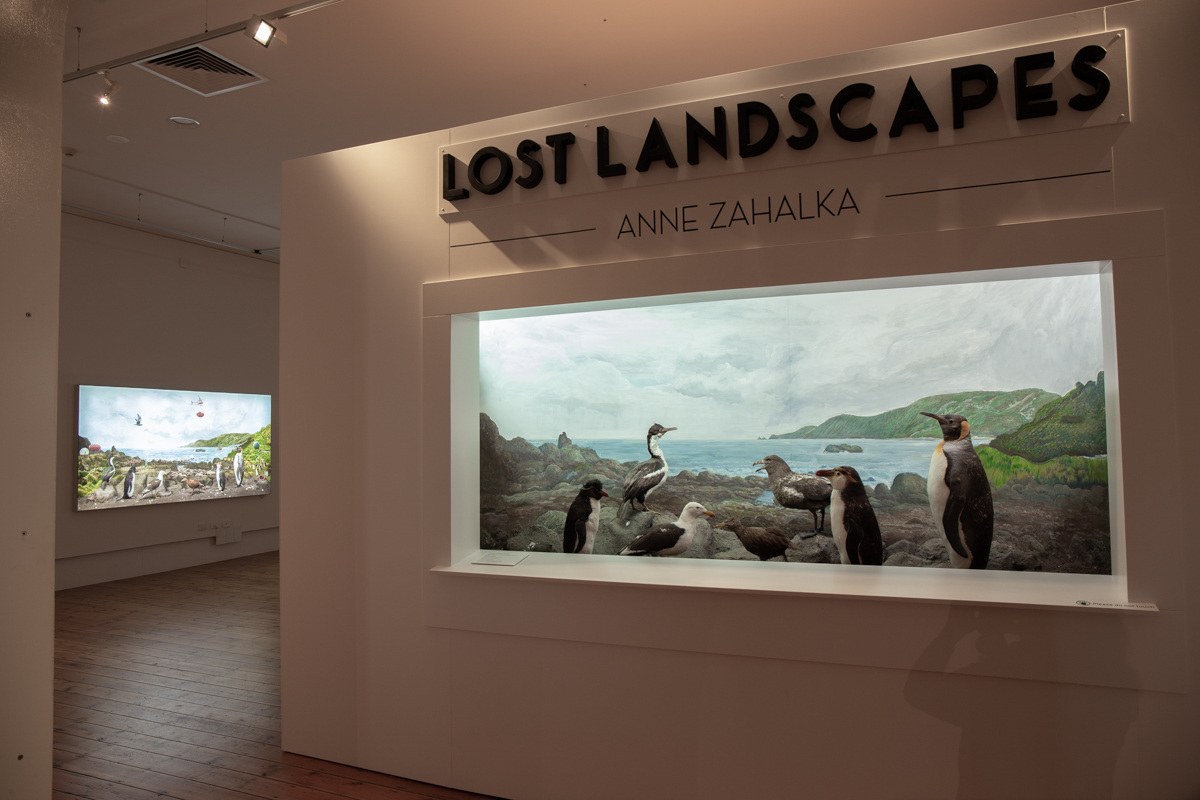
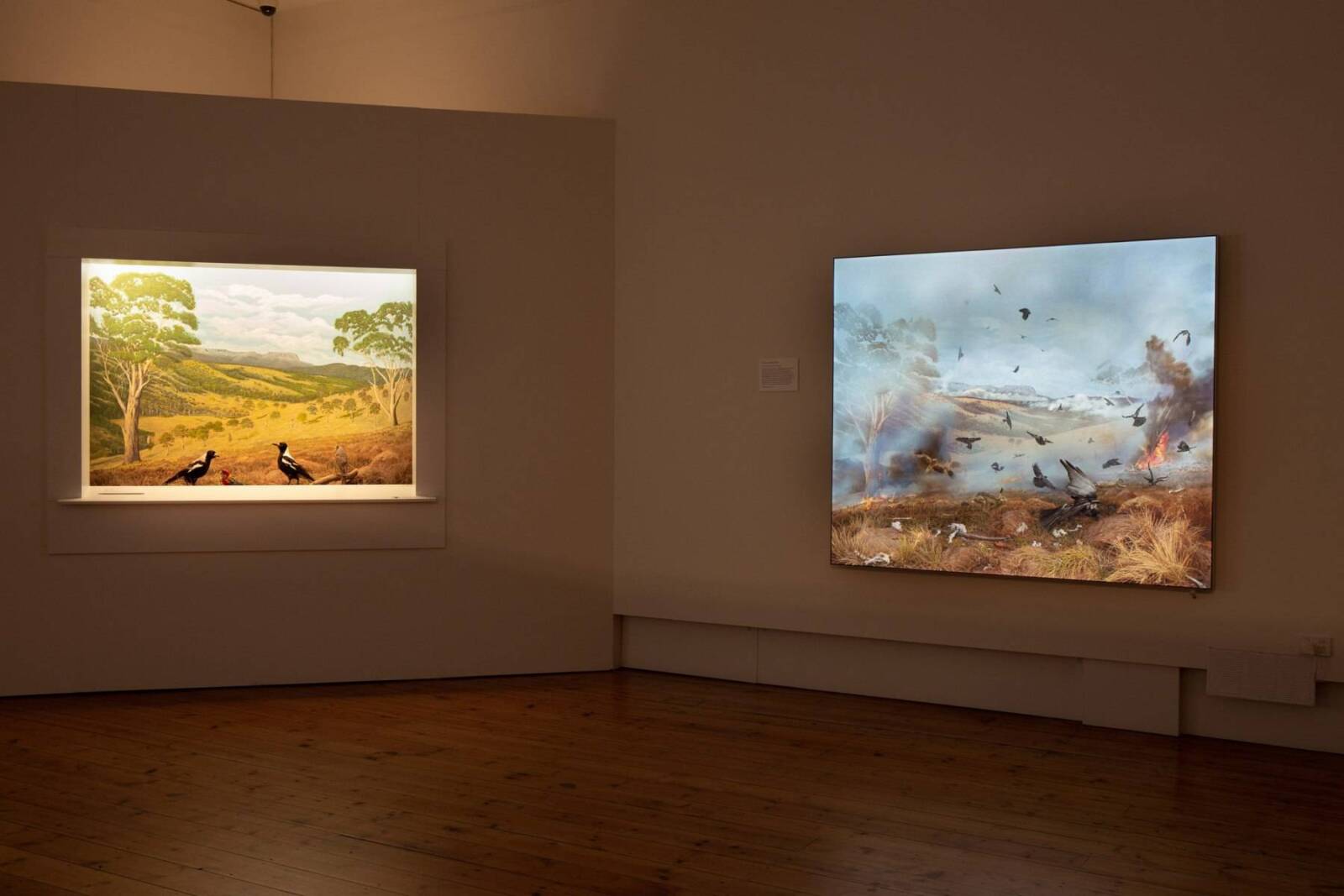
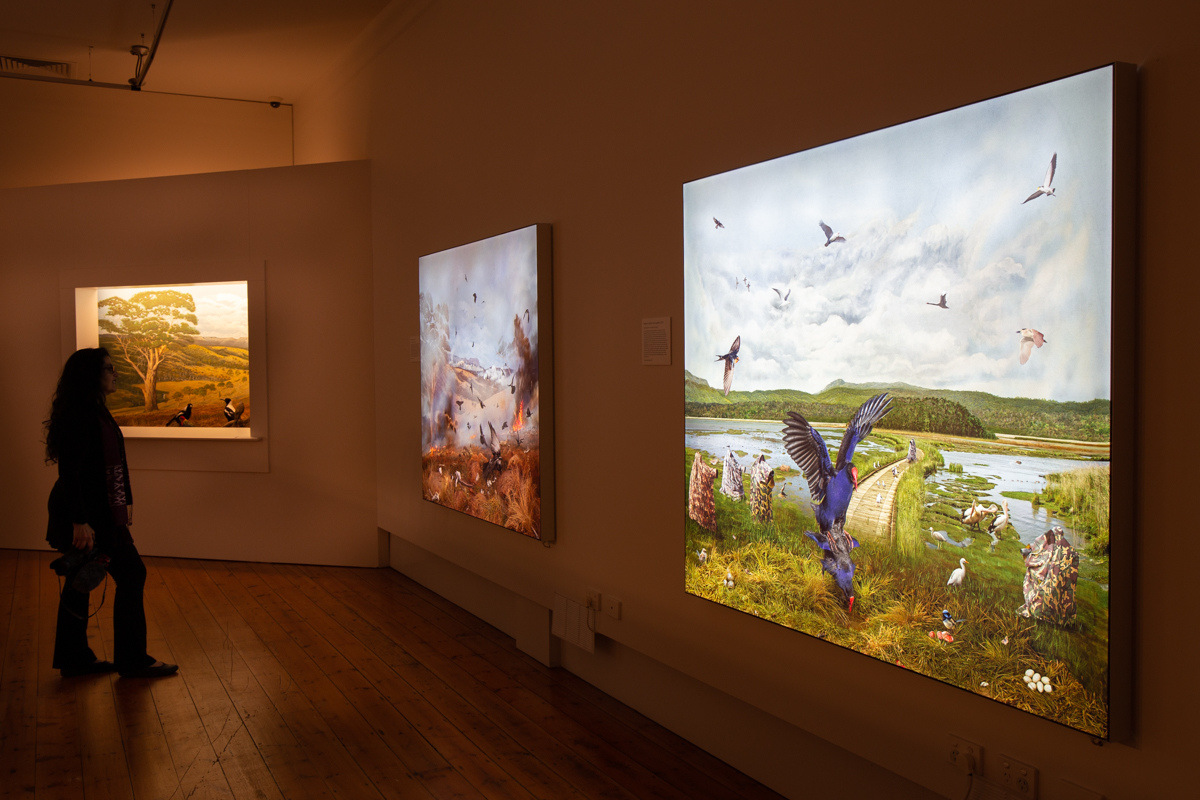
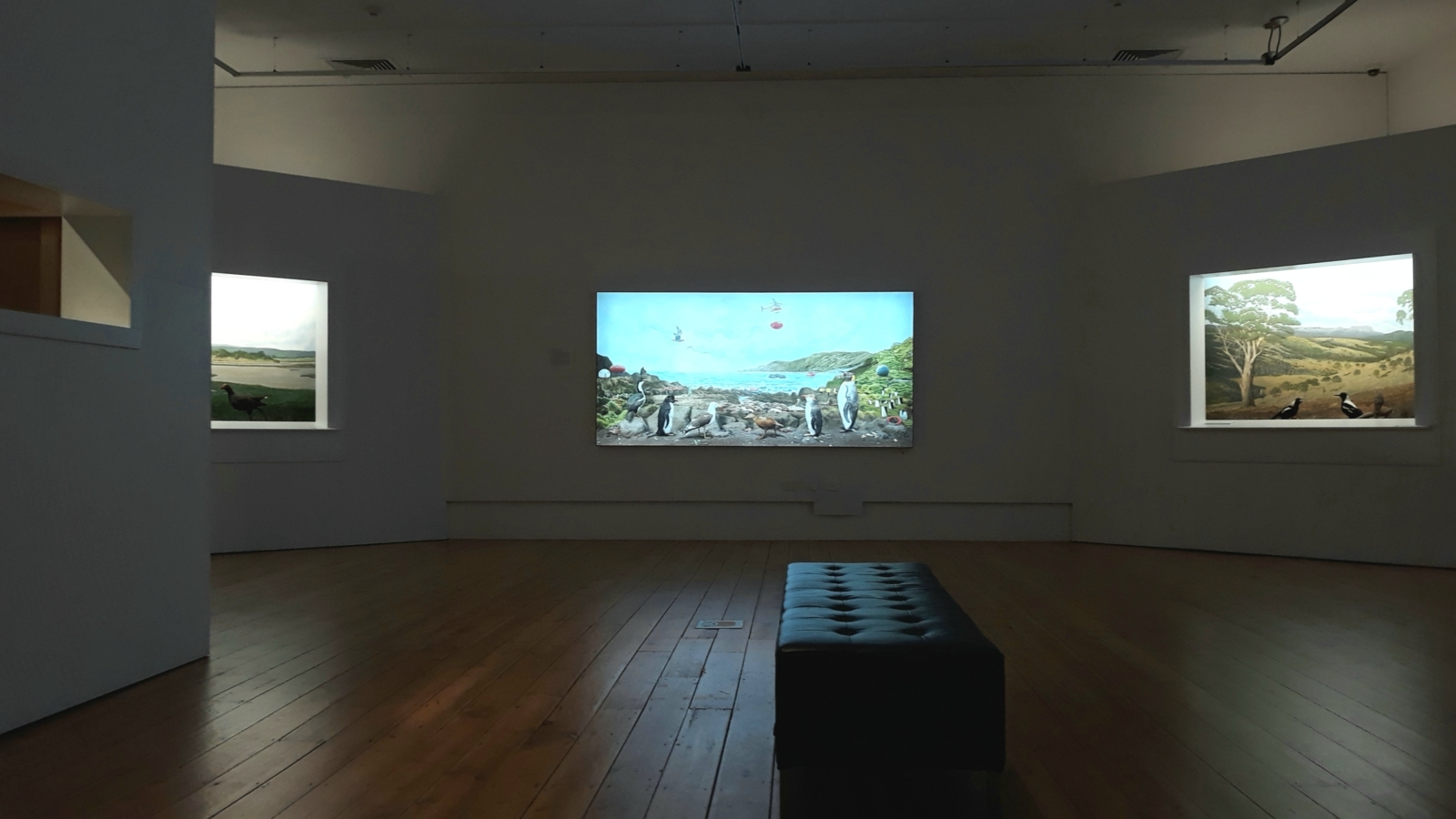
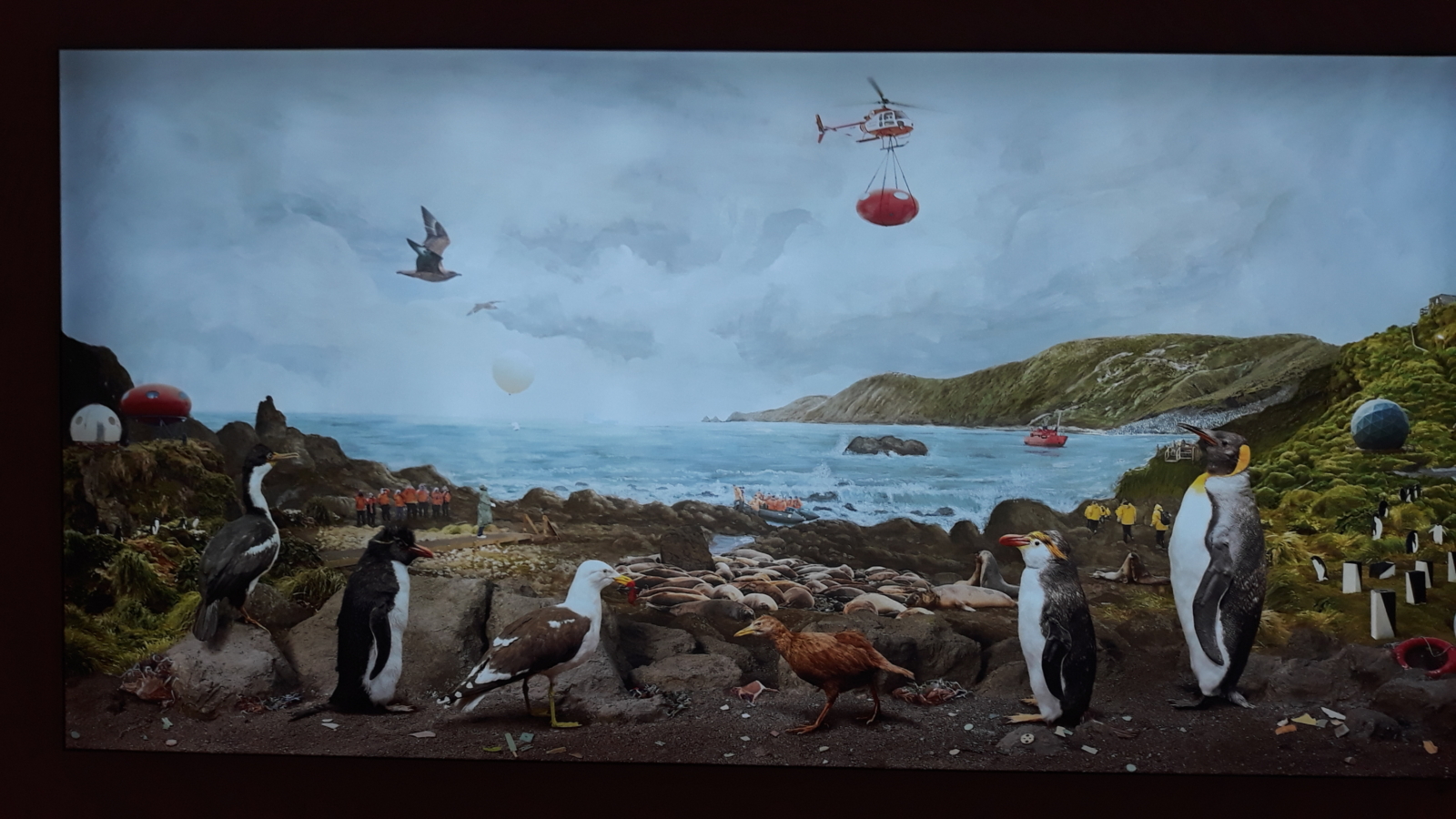
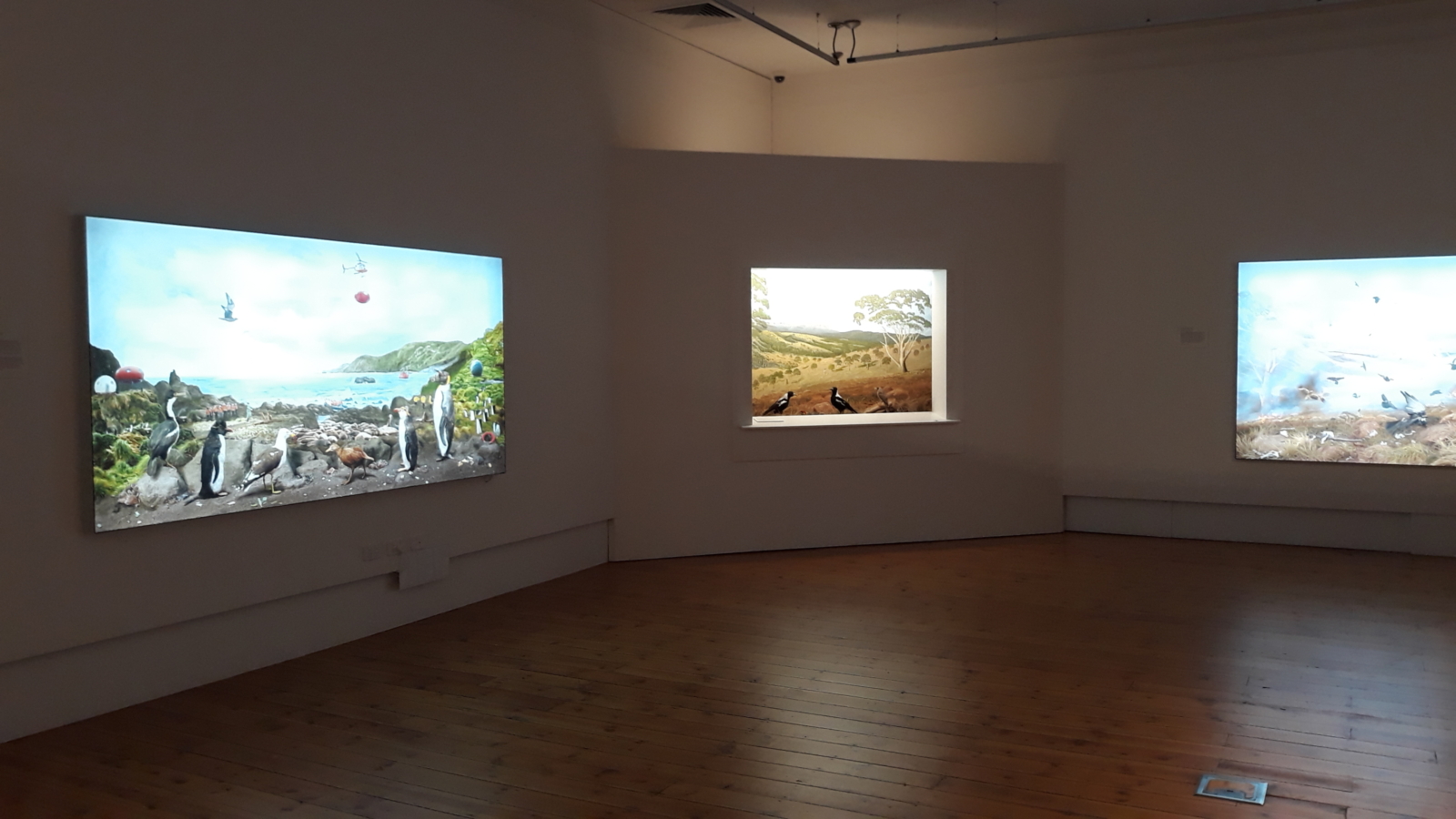
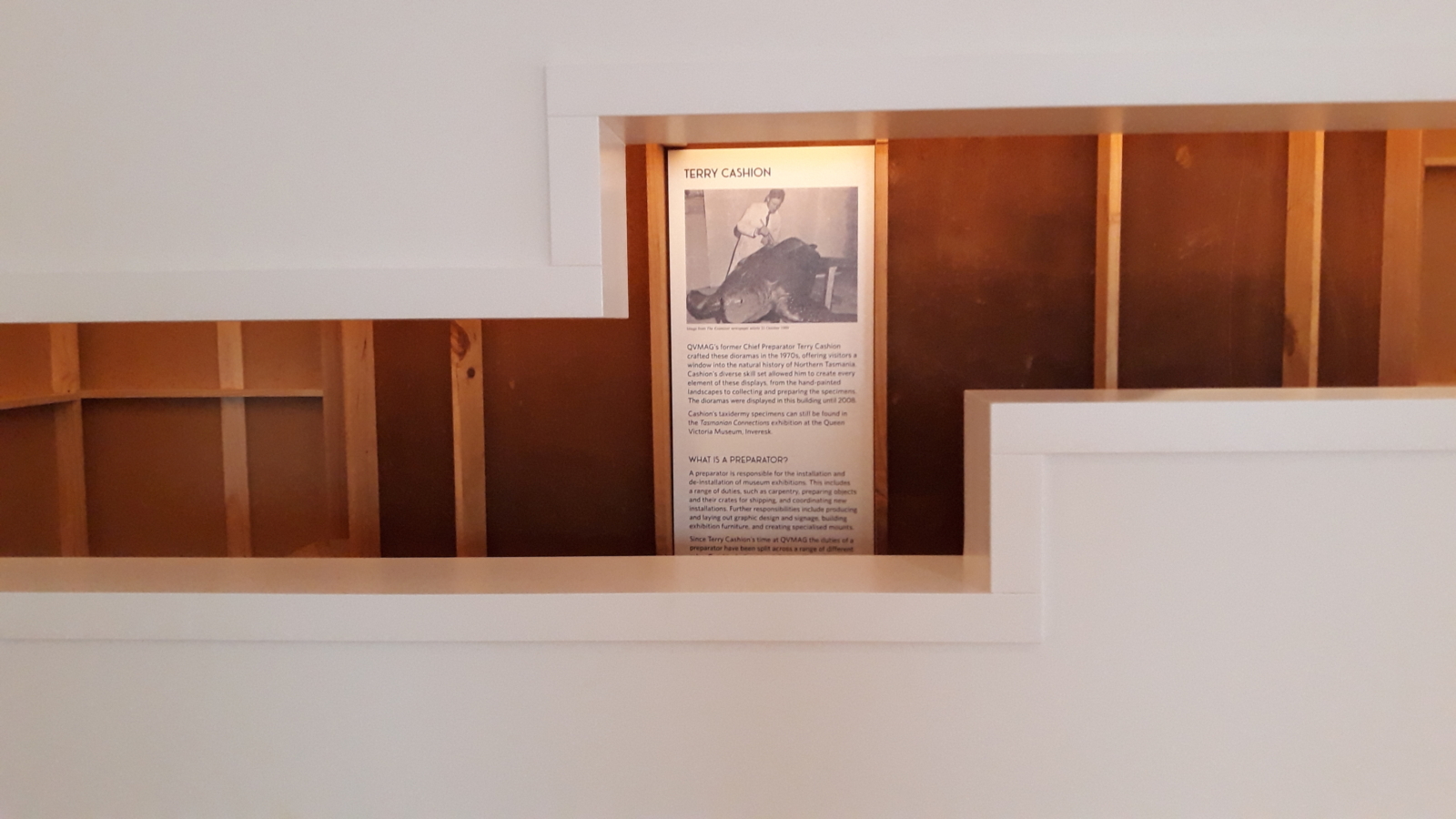
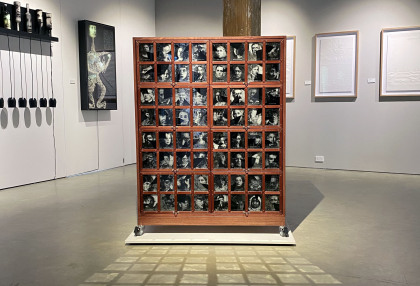
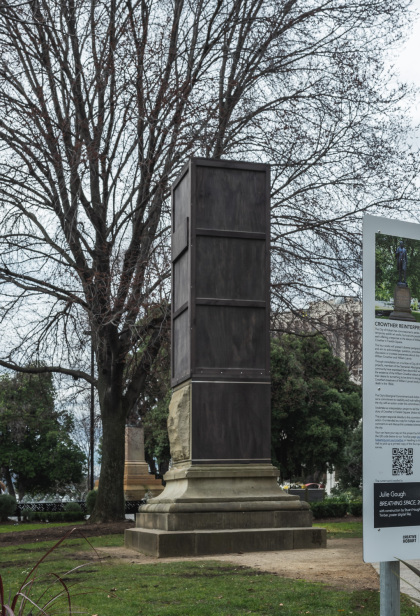
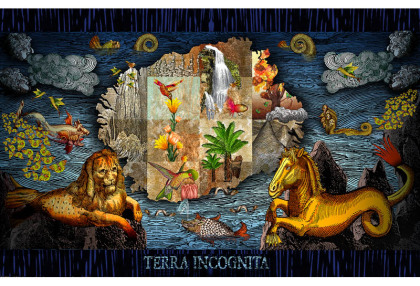
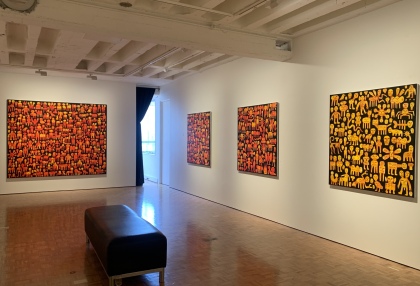
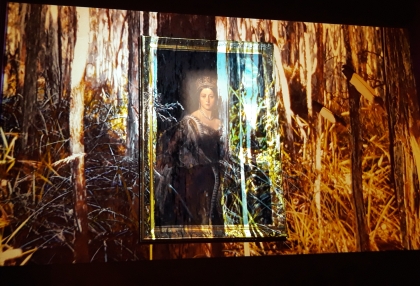
No Comments